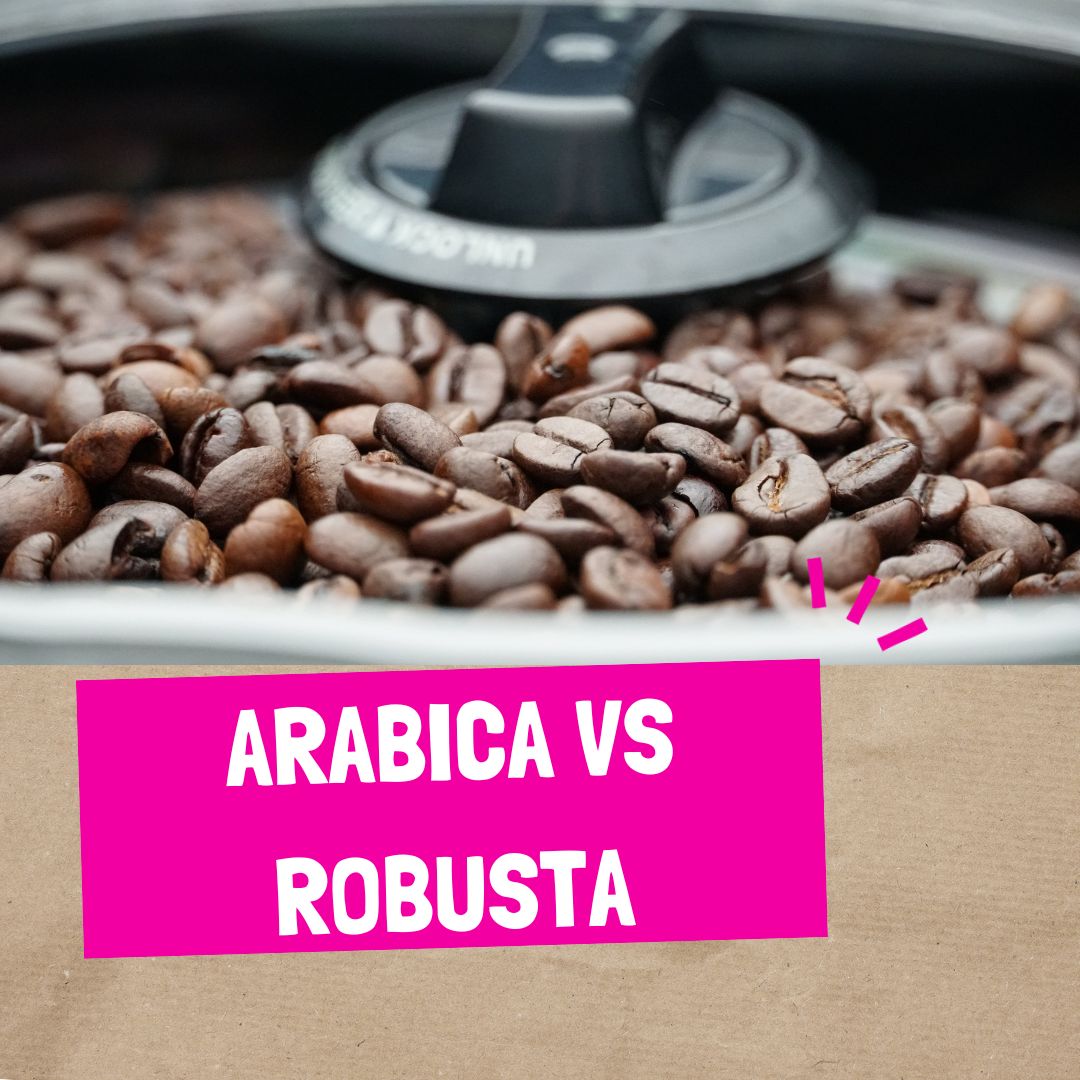What Country Produces The Most Coffee?
Coffee is more than just a beverage; it's a global phenomenon that unites people across cultures and continents. It's the comforting aroma that wakes us up in the morning and the soothing cup that fuels our productivity as well as being full of antioxidants! No wonder coffee is the UK's number one drink of choice, now even above tea!
But have you ever wondered which country is the powerhouse behind this caffeinated delight or where this cherry (yes the bean is actually a cherry!) is produced?
COUNTRIES THAT PRODUCE COFFEE
The only commodity traded more so than coffee, is oil...
The coffee producing countries all have one thing in common, they’re all located in the Tropics. That’s the belt running between the tropics of cancer and Capricorn. The Tropics has the right conditions for coffee trees to grow; heat, high humidity, plentiful rainfall, high elevation, and soil quality give the coffee tree all the nutrients it needs to produce delicious coffee cherries.
There are 3 primary coffee regions where coffee is grown - Africa, Central and South America, and South East Asia & The Middle East. All of these continents are located on the "bean belt" between the two tropic lines. One of the key factors for this area having the right conditions is the altitude being above 800 meters and up to 2,200 and the warm climate.
Central & South America
The top producing countries in the Central American region are Guatemala, El Salvador, Honduras and Costa Rica. This region is known for having well balanced, medium bodied coffee with bright aromatic flavours. Known for producing a clean low acidic cup of coffee.
The South American region mainly comprising of Brazil, Colombia, Peru and Bolivia is one of the most talked about and well know regions for coffee. Mainly thanks to Brazil. which is the top producers of coffee volume globally.
The profile of a South American cup is similar to that of a Central American cup - however this region is know for its creamier, chocolatey flavours.
Africa
The African coffee region includes nations such as Uganda, Kenya, Tanzania and of course Ethiopia. Some of the smaller producers who are starting to emerge include Rwanda and Burundi. Ethiopia is by far the biggest with 3% of global supply being produced here. Legend has it that coffee cherries were first discovered in Ethiopia by a Shepherd...
Yemen is the main contributor of coffee from the middle east region.
African coffee is known for its full bodied, earthy, fruity taste and does well as a natural coffee.
South East Asia
Indonesia and Vietnam are the largest producers in this region with Vietnam sitting behind Brazil as the second higher producer of coffee worldwide. Much of Vietnamese coffee is used in instant coffee by the likes of Nestle.
Indonesian islands like Java and Sumatra produced coffee that is a higher quality and often used in blends due to its full bodied, earthy, rich flavour.
Other regions are now producing delicate, well balance coffee such as Thailand and Laos.
Often when you buy coffee from your local store or supermarket its hard to comprehend or understand exactly where the coffee has come from and its journey to your cup. Many supermarket brands label the bags as "Italian style" or "French Style" or perhaps "South American coffee" (but where in South America hey!?). What really is Italian or French style? The bean has travelled for thousands of miles and we should pay more homage to its journey and to the farmers who have grown and cultivated this delicious drink.
Read more about the difference between specialty independent coffee vs C grade supermarket coffee here

Founders of RISE coffee Ben and Alice at the Equator
A Glimpse into Coffee's Origin
Coffee's journey begins in the lush, equatorial regions of the world. It's a tropical plant that thrives in areas with the right combination of altitude, rainfall, and temperature. Historically, coffee is believed to have originated in Ethiopia, where legend has it that a goat herder named Kaldi discovered the stimulating properties of coffee beans when he noticed his goats becoming more energetic after eating them. From Ethiopia, the coffee plant spread to the Arab world, where it became an integral part of their culture and eventually found its way to the rest of the world.
Coffee Varieties and Their Geographical Influence
Coffee lovers are familiar with various coffee beans and their unique flavours. The two primary species of coffee beans, Arabica and Robusta, are grown in different regions, each contributing to global coffee production.
- Arabica: Arabica beans are known for their delicate flavours and aromas. They thrive at higher altitudes in regions with cooler temperatures and more rainfall. This makes them more challenging to cultivate, but the result is a coffee with a wide range of complex flavours. Countries like Colombia, Ethiopia, and Brazil are renowned for their Arabica coffee production.
- Robusta: Robusta beans are hardier and more resilient, with a stronger, bitter taste. They grow at lower altitudes in warmer and more humid climates. Vietnam, Indonesia, and some African countries are significant producers of Robusta coffee.
Read about all the other, less common types of coffee beans here
Top Coffee-Producing Countries
Now that we understand the different types of coffee beans and their growth requirements, let's explore the top coffee-producing countries in the world.
1. Brazil
Brazil is often hailed as the undisputed king of coffee production. This South American giant has been the world's leading coffee producer for more than a century. The country's vast and diverse landscape provides the perfect conditions for coffee cultivation. Brazil specialises in Arabica beans and is known for its well-balanced, medium-bodied coffee with hints of nuttiness and chocolate. The Minas Gerais region in Brazil is particularly famous for its high-quality coffee production.
2. Vietnam
Vietnam is a rising star in the global coffee market. Unlike Brazil, Vietnam primarily cultivates Robusta coffee beans. The country's tropical climate and fertile soil are ideal for Robusta production, making it the second-largest coffee producer in the world. Vietnamese coffee is known for its bold and robust flavour, often used in espresso blends.
3. Colombia
Colombia is synonymous with high-quality Arabica coffee. The country's coffee is celebrated for its bright acidity, medium body, and distinct fruity notes. The Coffee Triangle region in Colombia, which includes Caldas, Quindío, and Risaralda, is renowned for its picturesque coffee farms and exceptional coffee quality. Colombian coffee is exported worldwide and is a favourite among coffee connoisseurs.
4. Ethiopia
As the birthplace of coffee, Ethiopia holds a special place in the coffee world. The country boasts a rich coffee heritage, with countless indigenous coffee varieties. Ethiopian coffee is known for its unique flavours, which can vary from region to region. Some common tasting notes include floral, fruity, and wine-like characteristics. The Sidamo and Yirgacheffe regions are famous for their high-quality Arabica beans.
5. Honduras
Honduras has emerged as a significant player in the global coffee industry in recent years. The country's coffee production has grown steadily, and it is now one of the top coffee exporters. Honduran coffee is characterised by its medium body and bright acidity, with flavour notes ranging from citrus to caramel. The Copán and Marcala regions are known for their exceptional coffee quality.
We wanted to give a quick mention to Uganda - 10th in the list of top coffee producing regions. Our RISE Friendly House beans come from Uganda and this is a country dear to our hearts. The Arabica coffee we buy, comes from the Rwenzori Mountains
Read more Here about our trip to Uganda.
Coffee is more than just a beverage; it's a cultural symbol, a source of livelihood for millions, and a global industry worth billions of dollars. While many countries contribute to the world's coffee production, Brazil remains the unrivalled leader, with its vast and diverse coffee estates. However, the unique flavours and characteristics of coffee vary from country to country, making coffee exploration an exciting journey for enthusiasts.
So, the next time you savour a cup of coffee, take a moment to appreciate the journey it has made from the coffee plantations of distant lands to your mug. Each sip carries the essence of its origin, and the diversity of coffee production worldwide is a testament to the incredible complexity and richness of this beloved beverage. Whether it's the floral notes of Ethiopian coffee, the boldness of Vietnamese Robusta, or the classic Arabica from Colombia, coffee production is a global symphony of flavours that continues to delight and unite coffee lovers around the world.

MONTHLY COFFEE DELIVERED TO YOUR DOOR































Leave a comment